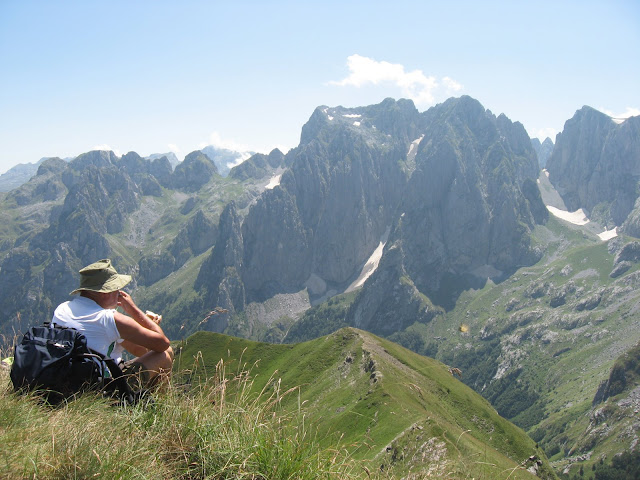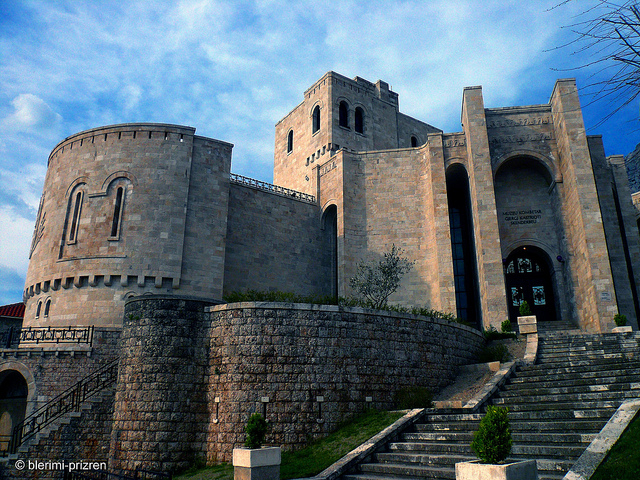Welcome to Albania
Introducing Albania
 lbania has natural beauty in such abundance that you might wonder why it's taken 20 years for the country to take off as a tourist destination since the end of a particularly brutal strain of communism in 1991. So backward was Albania when it emerged blinking into the bright light of freedom that it needed two decades just to catch up with the rest of Eastern Europe. Now that it arguably has done so, Albania offers a remarkable array of unique attractions, not least due to this very isolation: ancient mountain behaviour codes, forgotten archaeological sites and villages where time seems to have stood still are all on the menu. With its stunning mountain scenery, a thriving capital in Tirana and beaches to rival any elsewhere in the Mediterranean, Albania has become the sleeper hit of the Balkans. But hurry here, as word is well and truly out.
lbania has natural beauty in such abundance that you might wonder why it's taken 20 years for the country to take off as a tourist destination since the end of a particularly brutal strain of communism in 1991. So backward was Albania when it emerged blinking into the bright light of freedom that it needed two decades just to catch up with the rest of Eastern Europe. Now that it arguably has done so, Albania offers a remarkable array of unique attractions, not least due to this very isolation: ancient mountain behaviour codes, forgotten archaeological sites and villages where time seems to have stood still are all on the menu. With its stunning mountain scenery, a thriving capital in Tirana and beaches to rival any elsewhere in the Mediterranean, Albania has become the sleeper hit of the Balkans. But hurry here, as word is well and truly out. Berat city
The neighbourhood inside the castle's walls still lives and breathes; if you walk around this busy, ancient neighbourhood for long enough you'll invariably stumble into someone's courtyard thinking it's a church or ruin (no one seems to mind, though). In spring and summer the fragrance of camomile is in the air (and underfoot), and wildflowers burst from every gap between the stones.
The highest point is occupied by the Inner Fortress, where ruined stairs lead to a Tolkienesque water reservoir. Views are spectacular in all directions, and guided tours are available from the entry gate for €10. It's a steep ten minute walk up the hill from the centre of town.
2,500 years ago the castle above the city of Berat began. This castle is one of the last castles in Europe to have residents living inside it's walls. It's a pleasure to show travelers this heritage site plus visits to the Ethnographic Museum, Onufri Iconography Museum, and UNESCO historical quarters of Mangalem and Gorica.
Tour Length: Approximately 3 hours.
1-4 people: 30€
5-20 people: 45€
20+ people: 50€
Note: 3€ are needed for Castle, Ethnographic, and Iconography Museum entry.
The castle of Kruje in AlbaniaBehind the Trevi Fountain in Rome, you will find Piazza Scanderbeg, the Albanian national hero, who for some time lived in the palace that retains the name. Today they would celebrate the feats of incredible leader, who with a small army, managed to keep in check the Ottoman forces who, while they conquered Constantinople and Europe in the Balkans, they could not be right of a small Albanian army.
A great and tragic story of Scanderberg is that he was betrayed by the Venetians, deluded by the Spanish kingdom of the Two Sicilies, was the promoter of Albanian resistance that, for some, had in European history the same importance as the strength of the Spartans of Leonidas at Thermopylae.
Kruje is the birthplace of Skanderbeg
The castle of Kruje, Krujë in Albanian, was the last to fall into the hands of the Ottomans, 10 years after the death of George Castriota Scanderbeg. And there fell, not because they took it by force, but because the besiegers having had surrendered guaranteed to save his life. They all died, because the Ottomans did not stay to the covenants. It was October the 15th , 1478.
Kruje today is a city of Albania with a little more than 13,000 inhabitants, perched on the rocks. The castle now houses a museum dedicated to Giorgio Castriota. And although historians were careful, they did point out that it was well worth a visit.
Beside the entrance is another museum, the ethnographic museum of Albania, completed with a reconstructed building of the Ottoman Empire. Along with the old Bazaar, and the narrow streets that climb the castle I can say that it will be worth your day visiting Krujë.
|













